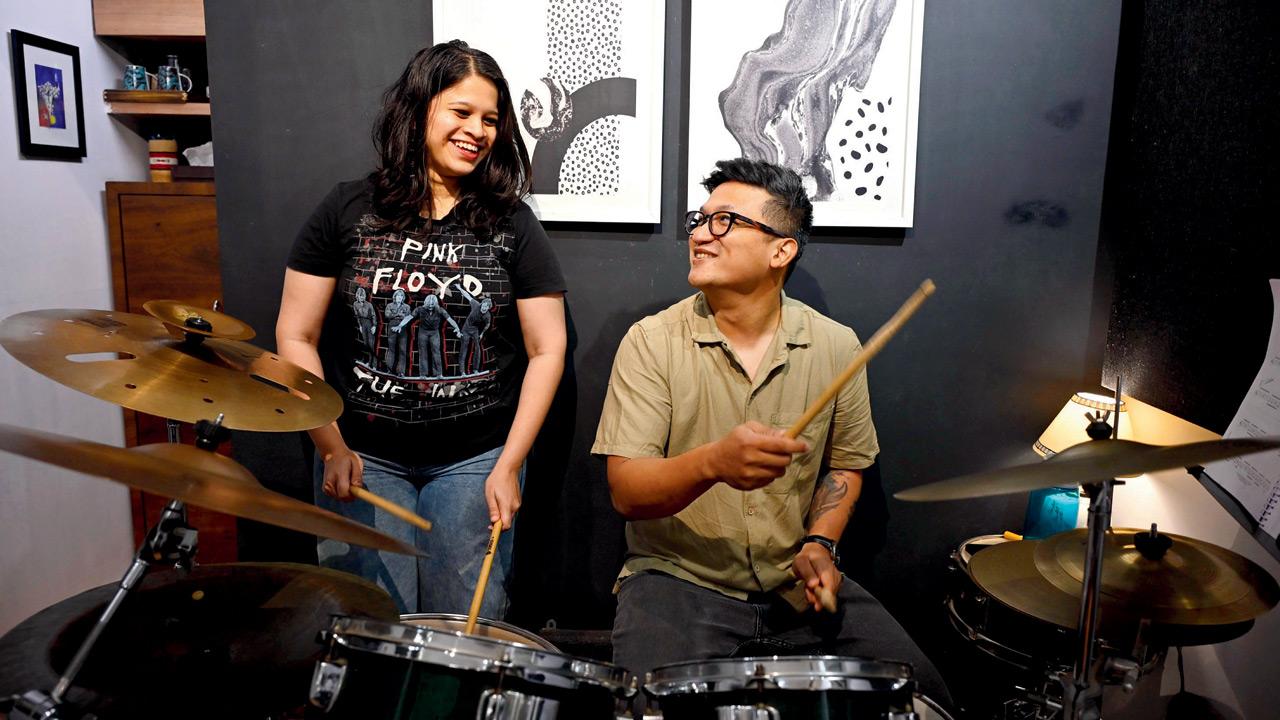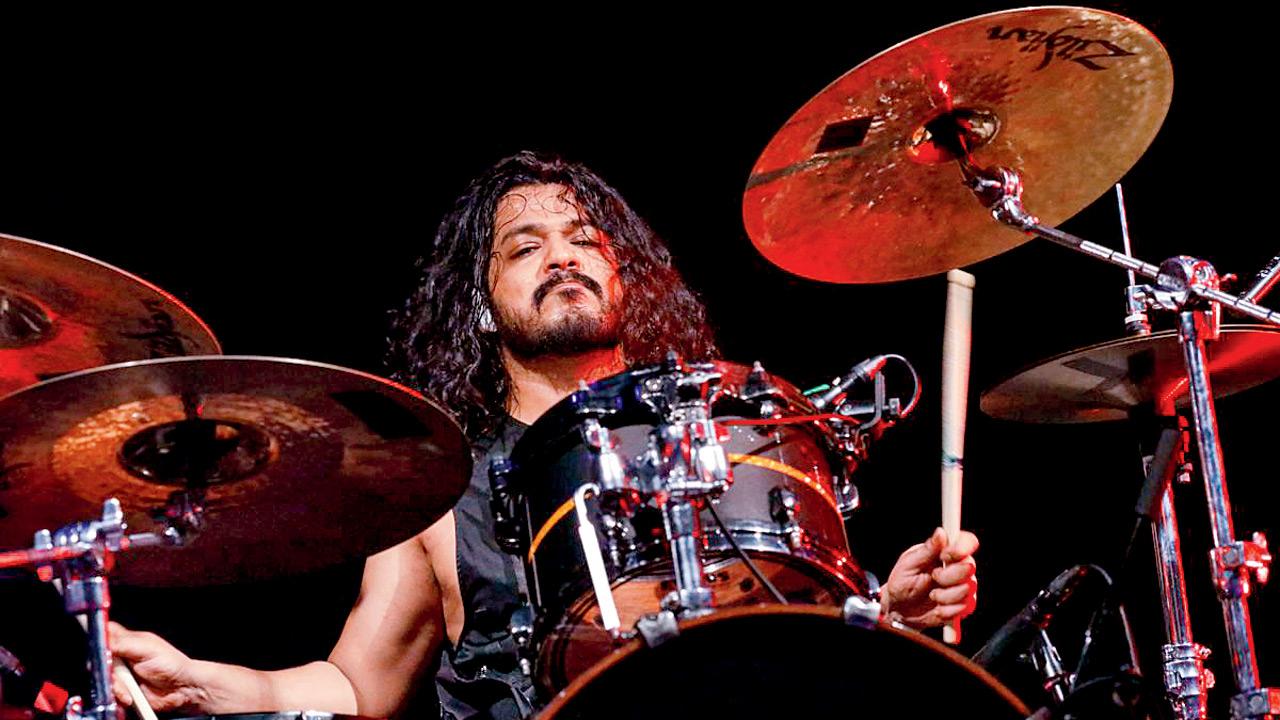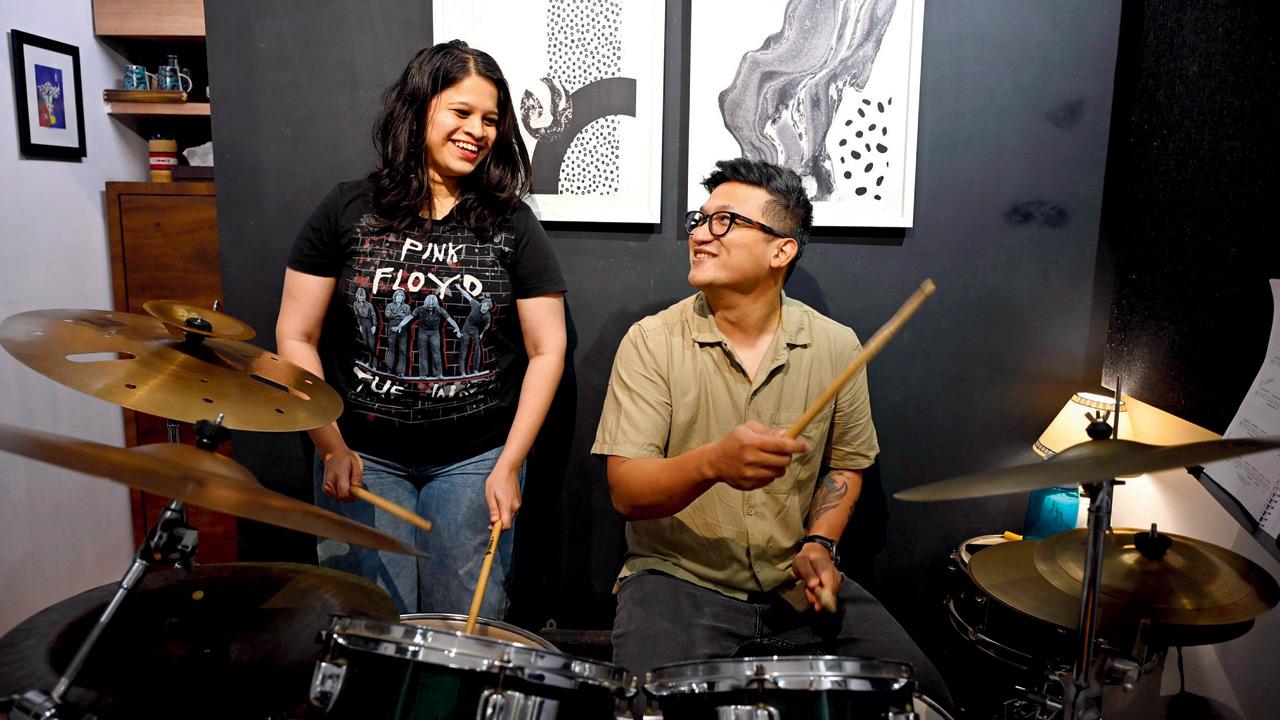From dhol-tasha practice to metal jams, drumming is a retreat for the youth, and comes with great clarity

Neha Mulye began drumming because it looked “cool and different”. Pics/Ashish Raje
The sounds of dhol tasha are in the air as neighbourhood groups gear up for the upcoming festival season, practising beats traditional and new. Percussion has long been woven into India’s cultural fabric, but a new wave is building. This time, it’s the emotionally charged Western drumming that’s capturing the imagination of a generation searching for ways to cope, connect, and rebel. For Eric Misal, an 18-year-old science student and session drummer in Mumbai, picking up the sticks wasn’t a calculated decision — it was visceral. “The sound of dhol and tasha, that thundering vibration that hits your chest, it’s a different feeling. I knew I had to learn it.”

Eric Misal. PIC COURTESY/ERIC MISAL
Part of this rhythm revolution is the Bombay Drum School (BDS), an institution offering structured, notation-based drumming education. Founded by Akoi (who goes by a single name), a self-taught drummer, BDS was built on a gap he noticed while growing up. “There were schools for tabla, keyboards, vocals — but nothing serious for drums,” he says.
Today, BDS offers one-on-one sessions, jam spaces, and prep for globally recognised Rockschool (RSL) exams. “We’ve had college kids and working professionals walk in just wanting to hit something,” he laughs, “and walk out with clarity.” That clarity is what drummer Vishesh Singh, from metal band Bloodywood, also speaks about. Raised in a traditional home in Varanasi, his entry into metal drumming was both rebellious and transformative. “I was an angry kid. I didn’t know how to deal with it. Drumming gave me that outlet,” he shares.
As one of the early metal drummers in India, Singh experienced first-hand how difficult it was to build a career in non-mainstream music. But the landscape is shifting. Thanks to online platforms, easier gear access, and more supportive families, the Indian drumming scene is buzzing with young talent.
While Singh represents the underground torchbearer, Neha Mulye, a Mumbai-based performer and drumming instructor, showcases the hybrid path, straddling both indie gigs and corporate stages. She began drumming because it looked “cool and different”, but that curiosity soon became commitment. Having completed two Trinity grades, she now performs regularly with indie and commercial bands.

Under Akoi (right), the founder of Bombay Drum School, Pari Patil (left) has found discipline and an aim
If Mulye showcases the gig-tested professional, Pari Patil brings a fresh, contemporary lens — one shaped by tech, trends, and new platforms. A work-from-home graphic designer, she heads to BDS once a week, motivated by the novelty of the instrument. “Everyone plays guitar or piano. Drums still surprise people,” she laughs.
The drum became both emotional anchor and social connector for Misal. “Kids would gather outside when I practised at home. That kind of encouragement builds confidence,” he says. According to Priyan Selvaraj, the West India representative for RSL, Mumbai’s interest in drumming is steadily rising. “People used to think drumming was just noise. Now they see it as precision, timing, expression.”
Still, challenges remain: High costs for studio time, the lack of accessible jam spaces, and a performance culture that often sidelines live bands. Yet the community supports its own. “If I need help, like borrowing gear or just some motivation, I know I can reach out,” says Mulye. Drumming, once seen as background noise, has become a means of expression, rebellion, and emotional anchoring. “Kids today are listening to a lot more rock and metal — it’s like fashion, everything comes back around,” says Akoi. “They’re discovering the same bands I loved in school.”
 Subscribe today by clicking the link and stay updated with the latest news!" Click here!
Subscribe today by clicking the link and stay updated with the latest news!" Click here!










